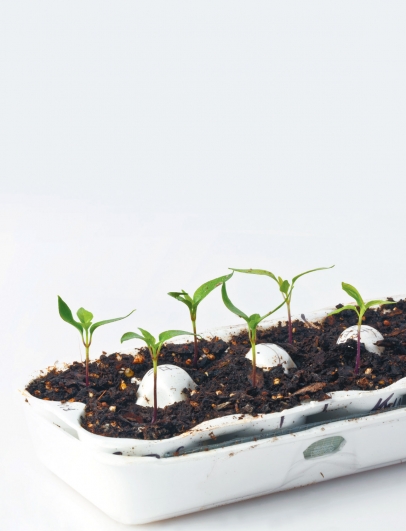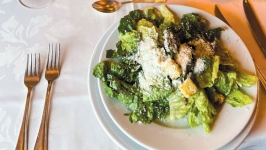Ready, Set, Grow!
Gardens are for everyone, and you don’t need a big yard to plant one. With a few supplies and a little bit of care, it’s easy for kids to turn sunny windowsills or shelves into their own personal garden plots.
Patrick Ryan, Education Specialist at the Alaska Botanical Garden, has been teaching kids about gardening for a long time, and shared some tips and tricks to get started. Ryan said kids should plant what they like to eat, and make sure containers are big enough for the type of vegetables chosen.
What to Plant
Carrots take a while to grow, and shorter varieties work best for indoor pots (make sure they are large enough).
Radishes grow very quickly and are a crunchy addition to salads.
Lettuce, kale, and spinach come in many varieties, and are fun to pick just before dinner.
Herbs are easy to grow from seed, do well on a windowsill, and smell wonderful. Try basil, cilantro, or chives.
Pots
Recycled containers are the easiest and cheapest way to start a windowsill garden. Just be careful that the sill or shelf is large enough to support the pot. Poke or drill a few holes in the bottom of the container for drainage. Write the plant’s name on the container with a permanent marker.
Clay pots come in a variety of sizes, and can be decorated to jazz up your windowsill with acrylic paint, beads, or other crafty materials.
Soil
Ryan said gardeners should buy the best potting soil they can afford, being careful not to purchase what’s often called “topsoil” or “garden soil” since it’s too heavy. Place a coffee filter at the bottom of the pot to keep dirt in and let excess water out. And speaking of watering, only give your plants a drink when the first inch of soil is dry—overwatering can be as bad as not watering at all!
Sunlight
Take a walk around your house during different times of day. Look for windows with the most daylight possible; these areas are perfect for your windowsill pots. Also make sure you water your seeds, then sprouts, according to the package directions.
Harvest
Pick your veggies when mature and mix up a salad for your family. Or, sprinkle herbs on chicken, pasta, or other dishes for an added flavor boost. If you’d like to try drying herbs, tie longer stems in bundles, secure with a twist tie, and hang upside down in a warm, dry spot. Wrap a mesh produce bag or paper bag containing several holes around the bundle and tie it at the neck. Store herbs in a jar with a tight-fitting lid.
The Alaska Botanical Garden offers summer classes and day camps for kids, a great way to expand your planting skills beyond the windowsill. Check out the garden’s website for more information (alaskabg.org) and visit the beautiful grounds in east Anchorage.
There are also several books about gardens, plants, and the whole process of growing food, but my favorite is From Seed to Plant by Gail Gibbons. Just beginning to think about gardening as a family? The book perfectly explains what happens when a tiny seed is placed in the soil. For kids ages five and up.






